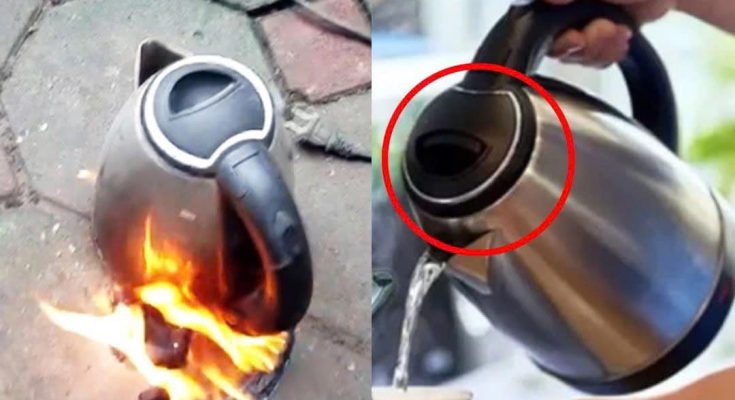Using an electric kettle to boil water seems simple, but many people make mistakes that can shorten its lifespan and even pose risks to health.
Electric kettles are a household essential due to their convenience—just add water, switch it on, and in minutes, you have boiling water ready for use. However, 9 out of 10 households unknowingly make these five common mistakes:
1. Choosing Any Electric Kettle Without Considering Material
Many assume that all electric kettles are the same and opt for the cheapest option. However, the material of the kettle plays a crucial role in safety and durability.
For best results, choose a kettle made of 304 stainless steel, which is highly resistant to corrosion and heat. This ensures that the boiled water remains safe for consumption.
2. Overfilling the Kettle
Filling the kettle to its maximum capacity may seem efficient, but it actually creates risks. As the water boils, it can overflow, seeping into the base and potentially causing a short circuit.
To prevent this, always follow the maximum water level marked inside the kettle. Never exceed this limit to ensure both safety and longevity.
3. Turning on the Kettle Before Adding Water
Some people have the habit of turning on the kettle before pouring in water, which can damage the appliance. Running the kettle without water causes dry boiling, leading to overheating and increasing the risk of electrical short circuits or fire hazards.
To use the kettle correctly:
- Always add water first.
- Place the kettle securely on its base.
- Plug it in and switch it on.
Also, check for any water residue on the base before placing the kettle. If wet, dry it thoroughly to avoid electrical hazards.
4. Pouring Out All the Water After Boiling
After boiling, it’s common to transfer the water into a thermos or bottle for later use. However, emptying the kettle completely can be harmful.
When the heating element is still hot and all the water is removed, it can dry out the thermal relay, reducing the kettle’s lifespan. Instead, leave a small amount of water inside and only discard it before the next use.
5. Neglecting Regular Cleaning
Over time, an electric kettle builds up a layer of mineral deposits (scale), which affects water quality and may pose health risks.
To clean the kettle:
- Add white vinegar and half a bowl of water.
- Boil the mixture and let it sit for 10 minutes.
- Pour out the liquid and wipe the inside with a clean cloth.
Since limescale is alkaline, the acidity of vinegar helps break it down, keeping the kettle clean and safe.
Final Thoughts
By avoiding these mistakes, you can extend the life of your electric kettle and ensure safe, high-quality water for you and your family. Take proper care of your appliance, and it will serve you well for years to come!



